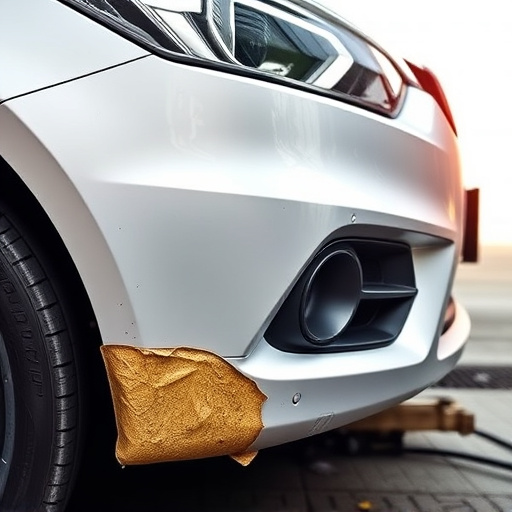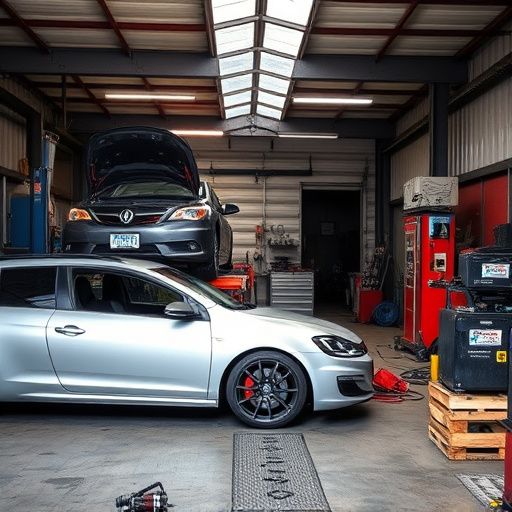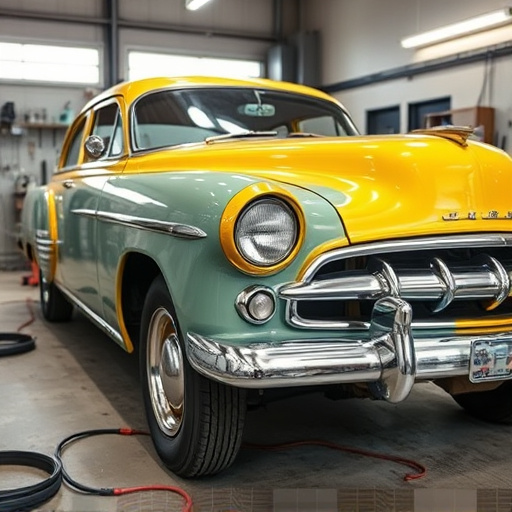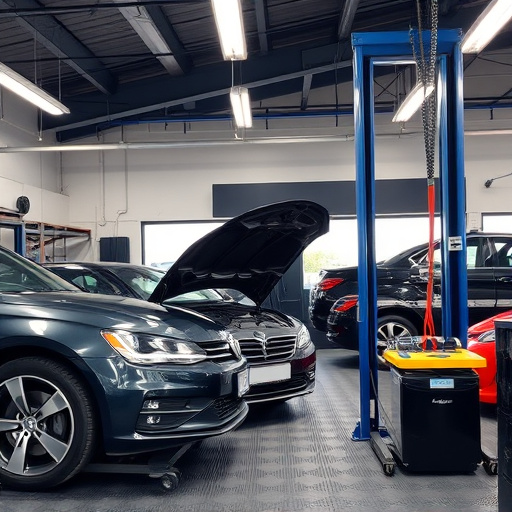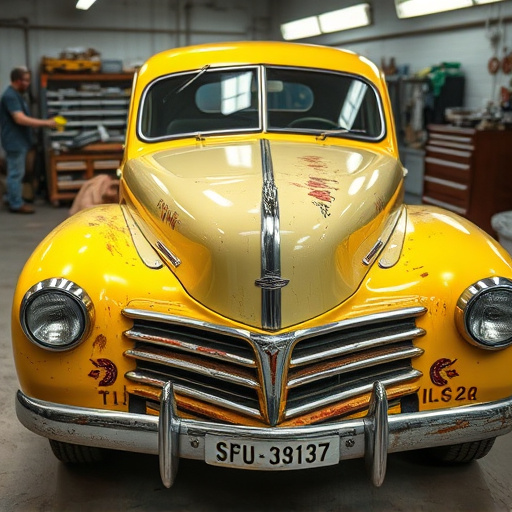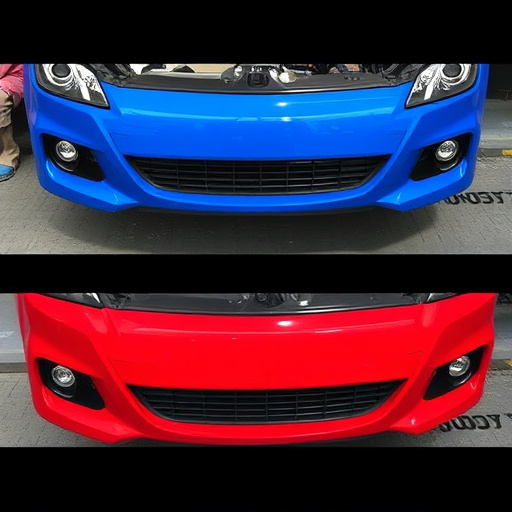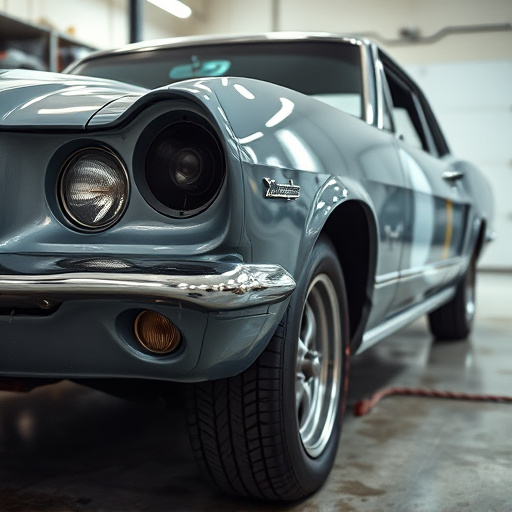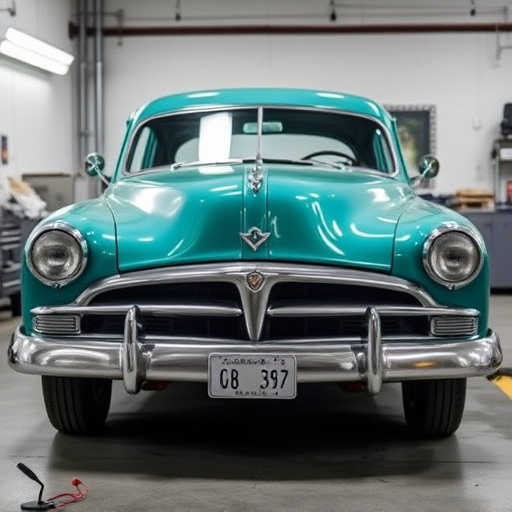Seam sealers are vital for auto body repairs, protecting against water and corrosion. Collision centers should choose the right sealer, prepare surfaces by cleaning and degreasing, sand for better bonding, and apply evenly with tools. Proper preparation, drying, and coats enhance durability and water resistance for long-lasting repairs.
In auto body repairs, choosing the right seam sealer is just the first step. Effective application techniques are crucial for achieving long-lasting, high-quality repairs. This article delves into the world of seam sealers, exploring different types and their unique roles in ensuring structural integrity and aesthetic appeal. We’ll guide you through surface preparation methods that optimize sealant adhesion and provide best practices for seamless applications, enhancing the overall durability of auto body work.
- Understanding Seam Sealer Types and Their Roles
- Preparing Surfaces for Optimal Sealant Adhesion
- Effective Application Methods for Best Results
Understanding Seam Sealer Types and Their Roles
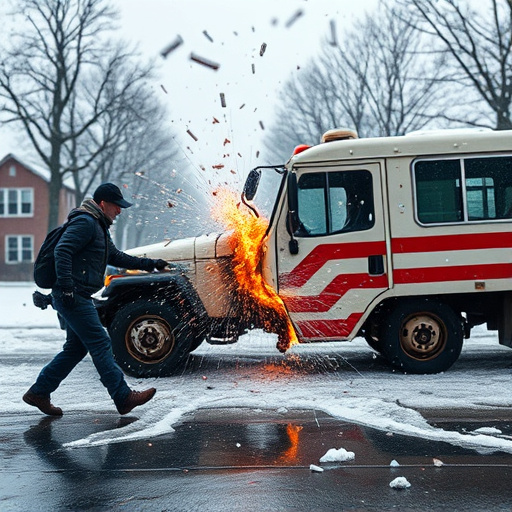
Seam sealers play a pivotal role in auto body repairs, ensuring that car bodies are sealed, protected, and restored to their optimal condition. Understanding the different types of seam sealers and their specific functions is essential for any collision repair center aiming to deliver top-quality workmanship. These sealers, applied after panel replacement or bonding, create a durable bond between joints, preventing water intrusion and corrosion—critical factors in maintaining car bodywork’s longevity.
Each seam sealer type offers unique advantages tailored to various repair scenarios. For instance, some are designed for superior flexibility, ideal for complex car body contours, while others provide enhanced resistance to extreme weather conditions. Choosing the right sealer is key to achieving a seamless (pun intended) finish that not only looks pristine but also ensures structural integrity in the long run, satisfying customers’ expectations and upholding the reputation of the repair center.
Preparing Surfaces for Optimal Sealant Adhesion

Before applying any seam sealer, it’s crucial to prepare the surfaces for optimal sealant adhesion. This involves thoroughly cleaning and degreasing the areas around the seams or joints to remove any contaminants, oil, grease, or loose paint particles that could hinder bonding. A simple solution of water and a mild detergent is effective for this step, followed by a thorough rinse to ensure no residue remains. Dry the surface completely with clean, soft cloths or air drying to prevent any moisture interference during sealing.
For classic car restoration or automotive restoration projects where precision is key, using the right tools and techniques for surface preparation can significantly impact the final outcome. This includes light sanding to create a rough texture that allows the sealer to bond more effectively with the existing paint or metal. Additionally, repairing any damaged areas or filling gaps ensures a seamless finish when the sealer is applied, contributing to a more professional and long-lasting repair in car body repair processes.
Effective Application Methods for Best Results
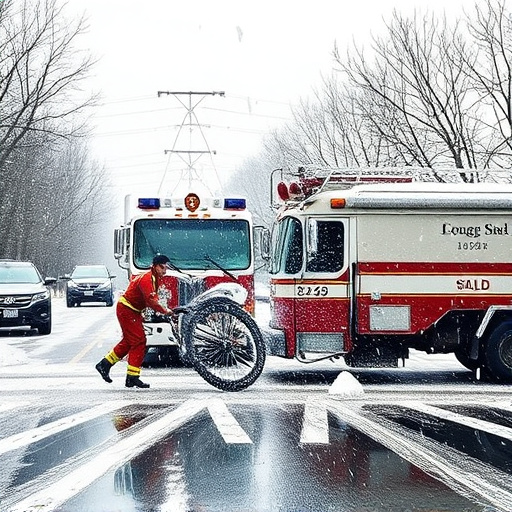
In achieving optimal results for auto body repairs, particularly after a car collision repair or vehicle body repair, understanding effective seam sealer application techniques is paramount. The first step involves preparing the surface meticulously by cleaning and degreasing to ensure the sealer adheres properly. This includes removing any loose debris, rust, or old sealants using sandblasting or specialized cleaning solutions.
Once the surface is ready, apply the seam sealer evenly across the joint or crack using a suitable tool like a roller, brush, or gun. For tight spaces, a thin applicator can help achieve precise coverage without overfilling gaps. Allow the sealer to dry as per the manufacturer’s instructions before applying additional coats for enhanced durability and water resistance in vehicle repair processes.
Seam sealer application is a critical step in auto body repairs, ensuring long-lasting durability and protection. By understanding the different sealer types, properly preparing surfaces, and employing effective application techniques, technicians can achieve superior results. These strategies not only enhance the structural integrity of repaired panels but also contribute to the overall quality and longevity of vehicle restoration work.
